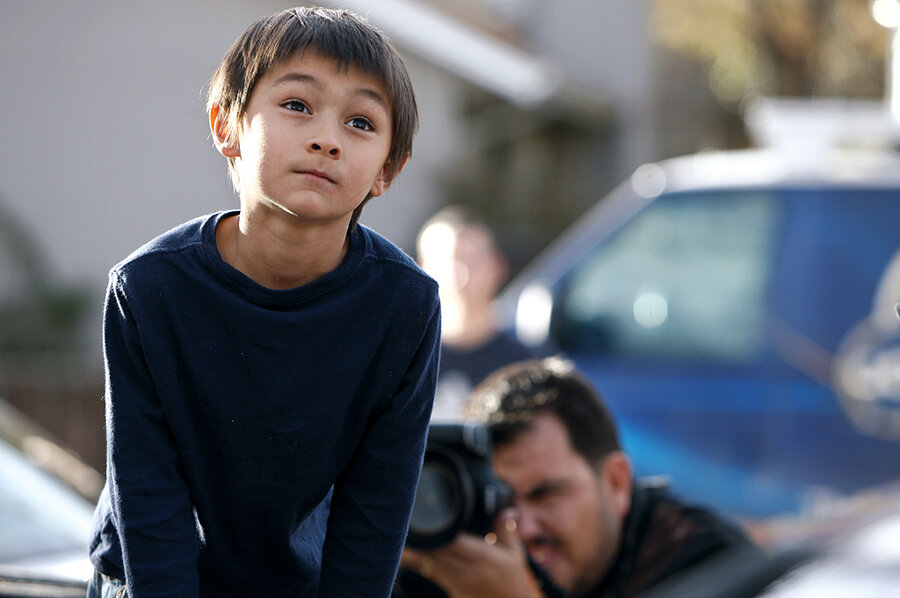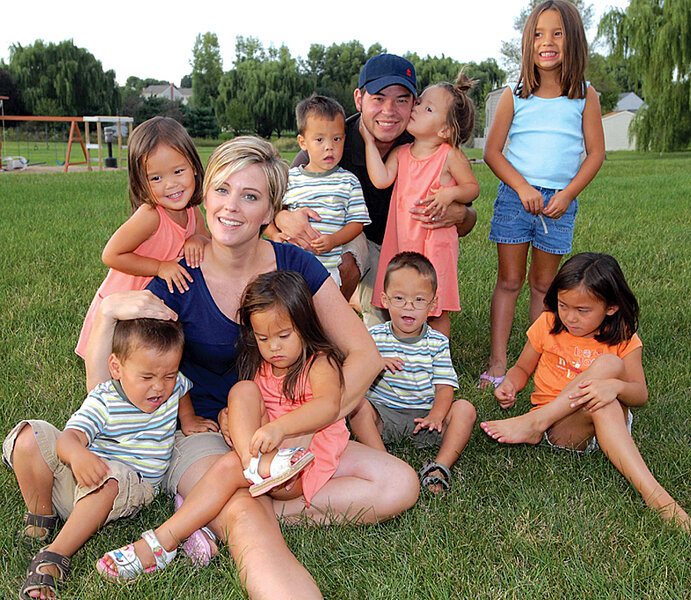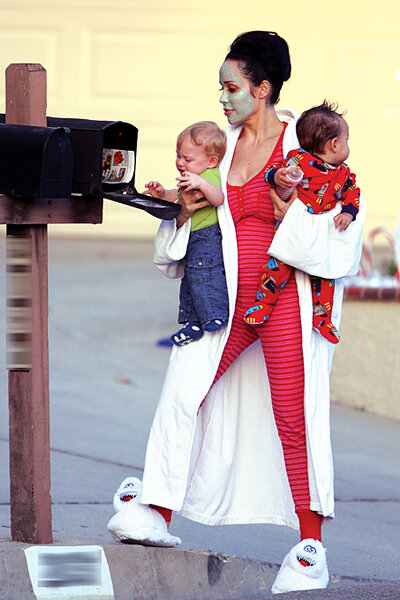When kids become tickets to fame
Loading...
There are media stars who happen to be parents. And then there are those whose media stardom seems mostly rooted in that role.
We know the names – Octomom, the Balloon Boy parents, Jon and Kate Gosselin and their eight children, even Bristol Palin. They, and many others, represent a new shortcut to achieving celebrity: a trend prominent media analyst Marian Salzman defines as "children as prime-time accessories."
In this scenario, people will increasingly use their children in bizarre, shameless, and sometimes unethical ways specifically to gain notoriety and then will take one step further to brand themselves as the official representative of that notoriety, which means a steady income and a guaranteed spot on the cluttered but competitive media landscape.
Ms. Salzman says that while reality television is a culprit in encouraging this extreme behavior, the problem is "much more serious."
"I think we're living in a social-media age where anything goes and everybody has a space. So you're seeing people being a little bit more uninhibited," she says, adding that even if it is a trend, that makes it no less disturbing: "We have to go back and we have to say, 'No, we can't do these things.' "
Parents and children are a combo that has reliably enjoyed the media spotlight's glare for decades. But what makes this current crop of fame seekers different is that they are primarily using their parental dysfunction to launch media careers.
When reality television star Kourtney Kardashian gave birth at age 30, she rebranded herself from a jet-setting party girl to a thoughtful first-time mom. Bristol Palin was once the poster child of teenage pregnancy and is now rebranded as a spokesperson for abstinence. Both are frequent talk show guests and magazine cover models in issues with articles where they give baby tips and talk about their kids.
"It shows having a baby is a quick way to make you famous," says Kirthana Ramisetti, managing editor of Predicto.com, a website that surveys pop culture.
"For the media, celebrities become much more interesting once they start having kids, and they get 10 times more attention. So I think when reality TV started having people aspire to be on TV, they see the attention celebrities get just by the virtue of having kids. So they home in on that and unfortunately are using kids to do that," she says.
Using children as a catalyst for greater exposure is a shift from earlier this decade when celebrity parents were seen as standard-bearers of good citizenship and used to promote products and provide an example of how best to parent. An example: If Angelina Jolie put her kids in a certain stroller, it meant that stroller was good for humankind, which meant the stroller sold out everywhere.
Which is a far cry from the egregious deceptions of the Balloon Boy parents or the public wrangling of Jon and Kate Gosselin. "What's happened now is [celebrity parenting has] moved to spectacle and the ante has been upped," says Joan Saab, director of visual and cultural studies at the University of Rochester, N.Y.
Ms. Saab says the same dynamic can be seen in today's political marketing. In past political families, first family children, such as Chelsea Clinton or the Bush twins, were not seen much on the political stage. That is very different from the last presidential election cycle, when stages were routinely filled with Obama, Palin, McCain, and Biden children and grandchildren.
"Now we're seeing them all the time. The kids are part of the whole [political] package, [generating chatter such as], 'What are they going to wear?' 'What are they going to look like? 'How will they behave?' We've moved from the accessory to the children themselves as sort of accessories," says Saab. "Octomom's just the negative end of that."
One natural reason children have become such valuable tools to catch the nation's eye is that, as the marketing world knows, children are valuable tools in opening pocketbooks. US companies spent $100 million marketing to children in 1983; today that figure has risen to $17 billion.
The intensive targeting represents a reality: "We are in a culture where everything is for sale. [That means] we are really dealing with the commoditization of everything, including children," says Susan Linn, director of Campaign for a Commercial-Free Childhood, who says the only difference today is technology. "With the proliferation of electronic media, there are many more opportunities for children to be exploited," she says.
Indeed, according to a new study issued by the Kaiser Family Foundation, children ages 8 to 18 are glued to media (television, computers, music, video games, print, and movies) more than ever, logging 10 hours and 45 minutes of media a day in 2009, a 43 percent increase from 7 hours and 29 minutes in 1999.
Parents hoping to limit their children's exposure can do something very simple: avoid posting to YouTube.
"Parents post videos of their children without their children's consent, and we just don't know what the impact of that is going to be and how kids are going to feel 10 years from now," Ms. Linn says.
The connection between a parent posting a wacky video of their children online and Octomom traipsing her sprawling brood through prime-time television is this: children's privacy rights.
Says Linn: "Parents might want to just take a moment to think about the ramifications of all the decisions they make around technology and their children. Technology has developed so rapidly that we really haven't had time as a society to look at the social, psychological, and political ramifications of its impact on children and children's development."
Of course, even fame-crazed parents won't be with us for long. A lesson for potential wannabes is public exhaustion.
Predicto's Ms. Ramisetti says her online surveys reveal a growing distaste among her respondents for the growing pool of media-manipulative parents. "You can get a sense people are sort of feeling fatigue about the incessant coverage of these people," she says, adding that tabloid sensations are "all cyclical and something new will come along and capture public fascination."
She uses as an example the evolution of media hype generated by socialite Paris Hilton, which shifted to the Kardashian family and, last year, to the Gosselins.
Cynics might say that's a devolution, but in the dynamics of fame, reality is always illusive.








